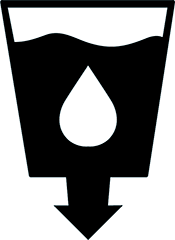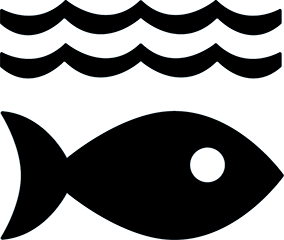BioHaven Floating Island from Floating Island West is a floating garden that naturally cleans water and improves habitats.
Benefits
- Increased biodiversity
- Improved water quality
- Sustainable
Applications
- Industrial and residential water treatment
- Shoreline protection
- Coastal restoration
UN Sustainable Development Goals Addressed
-

Goal 6: Clean Water & Sanitation
-

Goal 11: Sustainable Cities & Communities
-

Goal 14: Life Below Water
Bioutilization
- Native plants and microbes
The Challenge
Water is essential for human survival, and access to clean drinking water is critical for good health. Contaminated drinking water can cause numerous health concerns, including exposure to viruses. As the world population continues to grow, traditional wastewater treatment will quickly reach capacity. The machines will not be able to remove additional contaminants, and there will not be enough land to build more facilities.
Innovation Details
The BioHaven® Floating Island concentrates wetland plants and microbes on a fibrous matrix made of recycled material. The high surface area in the matrix promotes a large amount of growth of biofilms that filter contaminants such as phosphorus, copper, zinc, nitrogen, and ammonia out of the water. Additionally, the matrix acts as a filter for larger particles and an optimal location for plant roots and shoots to grow. All together, these features create a multi-purpose product that improves water quality in man-made and naturally occurring bodies of water.

Biological Model
Healthy wetland ecosystems are commonly seen as natural water filtration systems because they can remove sediments and nutrients from the surrounding soil or water. Nutrients such as nitrogen and phosphorous are taken from the water by bacteria and wetland plants that consume these nutrients as they grow. Physical processes like filtering and sedimentation can also remove nutrients and particles from the water. These biological and physical processes interact with many other factors, such as temperature and land structure, to affect a wetland’s overall function.






